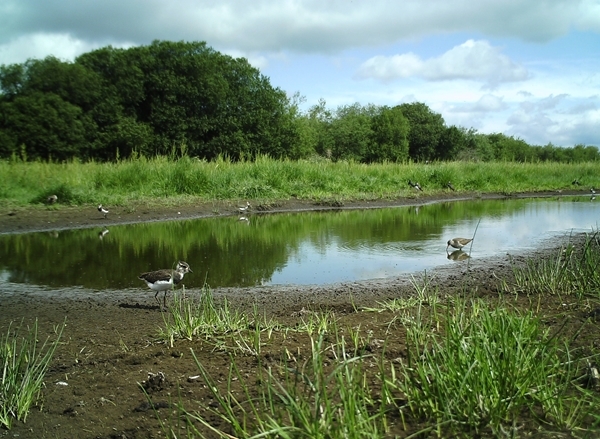
WADERS in the Avon Valley are making a comeback, according to scientists at a leading wildlife charity.
The EU LIFE+ Waders for Real project, run by the Game & Wildlife Conservation Trust, has seen an increase in the number of breeding lapwing and redshank following years of ailing numbers.
Recent results show breeding redshank have increased from 19 pairs in 2015 to 33 pairs in 2018 and the lapwing population has stabilised at 70 to 80 pairs. Snipe, a species which historically bred in the river valley but dropped in numbers since the early 1990s, have been heard again in the water meadows.
Ecologists working on the project, which launched in 2014 to reverse a 70 per cent decline in lapwing and 83 per cent fall in breeding redshank, have been working closely with landowners, farmers and gamekeepers to achieve these results.
Establishing an environment to aid wader recovery has focused on the creation of wader hotspots, where a combination of intensive habitat improvements and management of wader nest and chick predators has been conducted.
In-field wet features provide optimum conditions for foraging breeding wader chicks, providing a rich source of invertebrates to eat and soft soil to facilitate probing. These mini-wetlands also host dragonflies, damselflies, molluscs and important wetland plants, as well as overwintering waders and waterfowl. So far, the project has created or restored 7.3km of wet ditches and added 33 shallow scrapes, alongside providing advice to their farmers on grazing and cutting to create optimum wader breeding habitat.
Waders select open landscapes, avoiding places where predators perch and hide. With the help of students from Sparsholt College, over 2km of old fence lines and willow scrub have been removed and 125,885m2 of wader breeding habitat protected from terrestrial predators by electric fencing. In addition, intensive camera trap monitoring has improved the efficiency of legal predator control already conducted on parts of the study area by private landowners to assist wader recovery.
Lizzie Grayshon, LIFE Waders for Real project ecologist at GWCT said: “Starting to see recovering numbers of lapwing and redshank is a fantastic achievement for the project and testament to the hard work of our team and our network of landowners, gamekeepers and farmers.”
“Excellent work to help these birds is done on nature reserves throughout the UK, but to combat national declines, conservation needs to work in the wider landscape alongside economic farming. This work demonstrates what can be achieved when conservation organisations work closely with land managers. The combined knowledge and resources gained can have huge conservation benefit, be that for waders as in our case or any other farmland wildlife in decline.”
The scientists at GWCT are starting to better understand which techniques are most effective in increasing breeding success of waders on their sites and hope to record further successes in 2019, the final year of their project.

Notes to editors
The Game & Wildlife Conservation Trust – providing research-led conservation for a thriving countryside. The GWCT is an independent wildlife conservation charity which has carried out scientific research into Britain’s game and wildlife since the 1930s. We advise farmers and landowners on improving wildlife habitats. We employ more than 60 post-doctoral scientists and other research staff with expertise in areas such as birds, insects, mammals, farming, fish and statistics. We undertake our own research as well as projects funded by contract and grant-aid from government and private bodies.
For information, contact:
Eleanor Williams
Telephone: 07592 025476
Email: press@gwct.org.uk